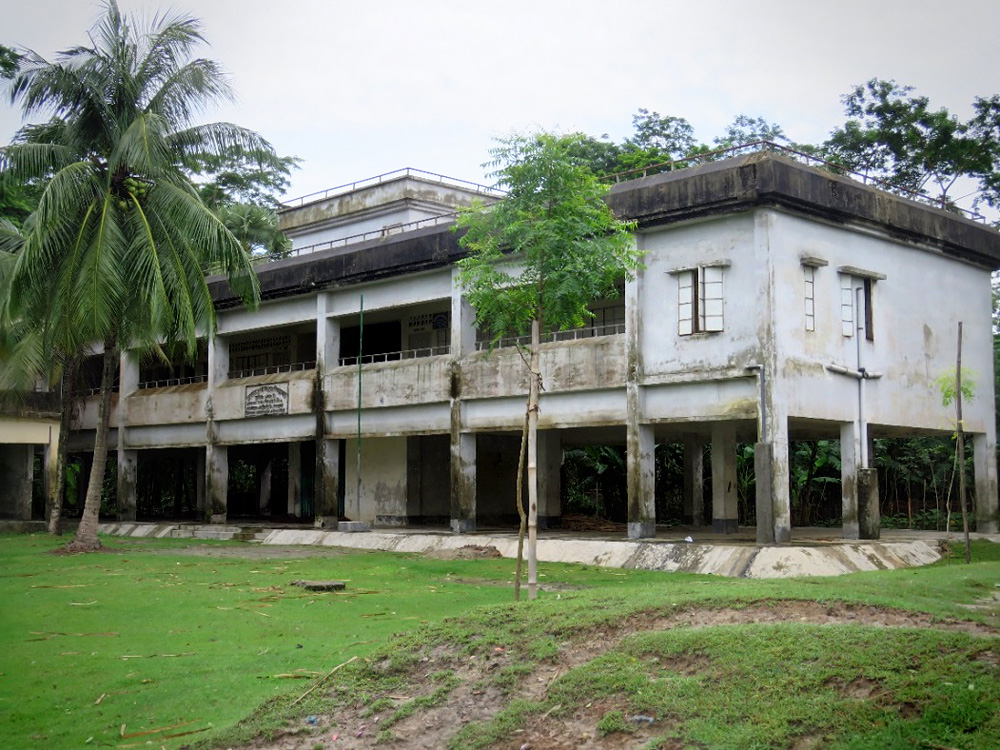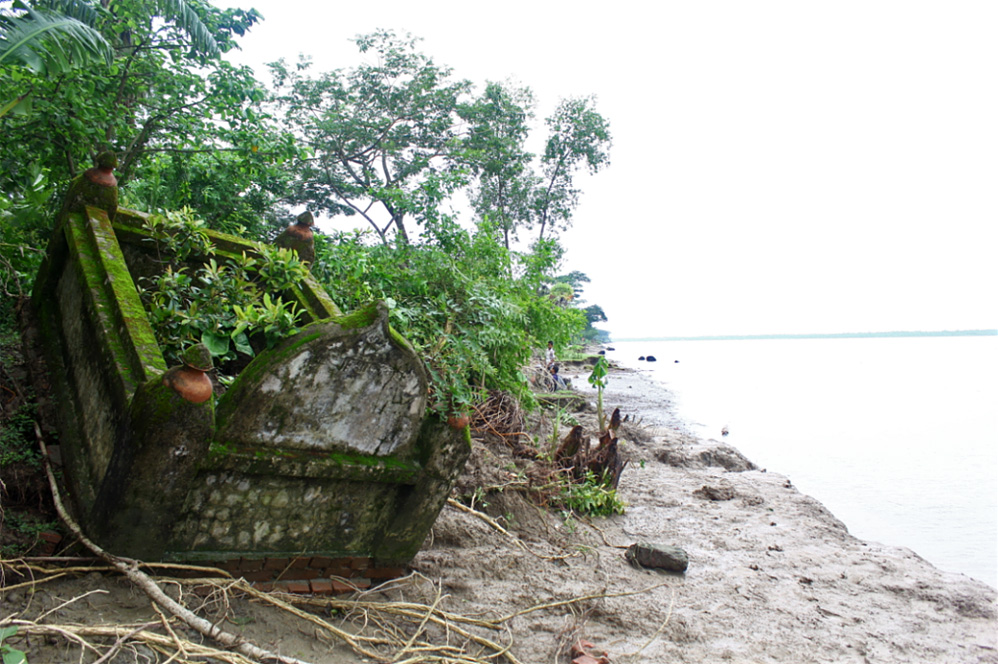-
Finding Resilience in the Aftermath of Cyclone Roanu in Bangladesh
July 7, 2016 By Mickael De SouzaIn 1970, Cyclone Bhola slammed into East Pakistan – present day Bangladesh – with sustained winds of 150 miles per hour, killing as many as half a million people. In 2007, Cyclone Sidr killed 3,406 people in Bangladesh. This year, Cyclone Roanu killed just 30. What’s behind this huge decline in mortality? What has Bangladesh done differently?
The Gibika Project of the International Center for Climate Change and Development (ICCCAD), based in Dhaka, with help from the United Nations University Institute for Environment and Human Security, has been researching and attempting to build community resilience to cyclones and the impacts of climate change since 2014.
I was fortunate enough to join ICCCAD staff on a visit to the village of Dalbanga South in the Barguna district of southern Bangladesh three weeks after Cyclone Roanu struck in May. Villagers here are predominantly fishermen; some are pastoral rice farmers. The objective was to assess what was done during the cyclone and the effects of initiatives to preserve local livelihoods and lives.
Since Bhola and Sidr, improvements to Bangladesh’s early warning and shelter system have helped save countless lives. Weather stations relay information to early warning volunteers through cell phones. Those volunteers then use public address systems, typically used for prayer calls, to sound the alarm and notify villagers to go to a cyclone shelter. Depending on the information relayed, a certain number of flags are raised above the shelter indicating the strength of the storm.
Villagers sometimes bring food, medical supplies, and even livestock – key to their livelihoods – into the shelter. Once a cyclone hits, villagers may remain inside for a few days until the water level, winds, and rains subside and conditions are safe again. Some leave early to save cattle and goats, putting them at the mercy of the elements, and these account for many of the remaining casualties.
Fortunately, no one in Dalbanga South was killed during Cyclone Roanu. The main difference between cyclones nine years ago and today is that communities know much more. Villagers with access to television and radio can hear about the storm earlier than through the volunteer system, and the amount of villagers who have access to radio and television has steadily risen. For many, the early warning system functions as a safeguard to check and see if the information matches what they’ve heard elsewhere. The village also recently built an irrigation system with the help of outside NGOs that allows stagnant water to flow back into the bay and bring water levels down more quickly.
NGOs have played a prominent role in funding research and mitigation efforts. The cyclone shelter in Dalbanga South was built thanks to contributions from USAID and the Bangladesh government, but also local groups like the Bangladesh National Woman Lawyers’ Association and international organizations like Plan International.
ICCCAD is focused on building long-term resilience at this site, particularly to riverbank erosion caused by an increase in the amount and variability of seasonal flooding. Researcher Istiakh Ahmed noted than when he visited in May 2014 a house stood where now only the Bishkhali River flows. Villagers asked for help building a levy to lessen some of the effects of this flooding, including erosion, increased salinity which affects farming, and changing fishing patterns.
But many NGOs including ICCCAD lack the funding to build such infrastructure, and in many cases can only collect data in the aftermath of an extreme weather event. Villagers asked the researchers to come more frequently, every three months or so, to help them learn how to handle the impacts of climate change, and not just cyclones. Yet this may prove difficult because Dalbanga South is one of many communities being surveyed and studied through the Gibika Project. The effort is an attempt to shield and adapt traditional ways of life from environmental changes at seven different sites.
There is more work to be done to adjust to climate changes in these fragile coastal areas. Sea-level rise of half a meter by 2050 could result in Bangladesh losing about 11 percent of its land area and affect 15 million people.
But the system was nonetheless impressive. Three weeks after Cyclone Roanu, villagers were putting the final touches on repairing the last of the broken houses, wrecked boats, and leaking roofs. The shelter had returned to duty as a schoolhouse. Kids were swimming, men were fishing or farming, and women were tending to the young.
Correction, July 18, 2016: An earlier version of the text confused the founding of ICCCAD with the start of the Gibika Project. The project is also focused not only on riverbank erosion, but long-term resilience in general.
Mickael De Souza is a student and visiting researcher at the International Center for Climate Change and Development (ICCCAD), based in Dhaka, Bangladesh. He is studying anthropology and sociology at Concordia University in Montreal, Canada.
Sources: Government of Bangladesh, International Center for Climate Change and Development, International Institute for Environment and Development, United Nations Development Program, Weather Underground.
Photo Credits: #1, 2, 3, 5, used with permission courtesy of Mickael De Souza; #4 used with permission courtesy of Istiakh Ahmed.
 A Publication of the Stimson Center.
A Publication of the Stimson Center.








